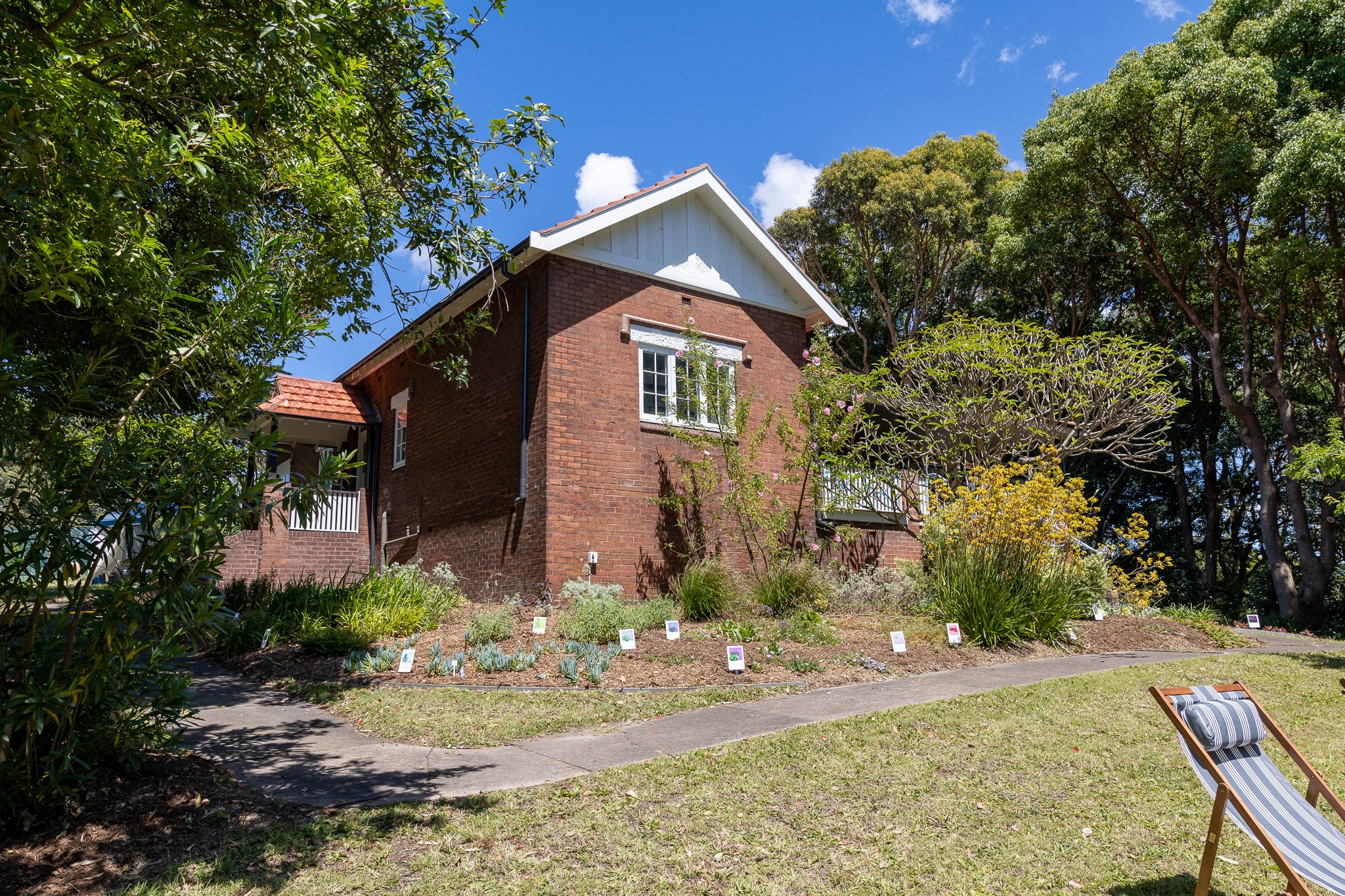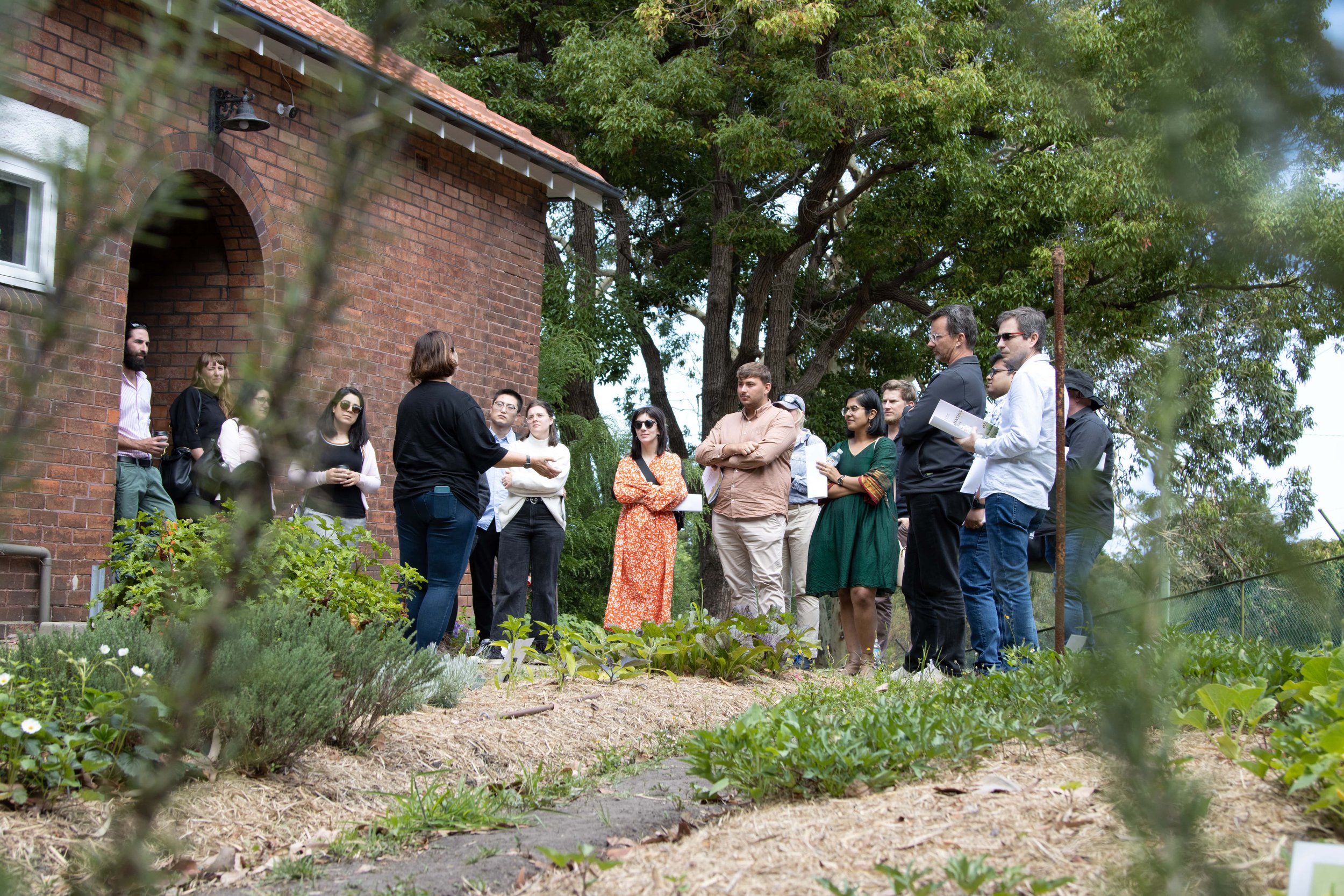Plant Power: How Phytoremediation is Helping Revitalise Contaminated Land
Open Day - November 2022; Photo by Jedd Cranfield
By Lisa Cugnetto
Delprat Garden – which sits within the grounds of the heritage-listed Delprat Cottage and is owned by the University of Newcastle – was a strategic selection for the second stage of the phytoremediation project. It offered a post-industrial site that would be available for many years, enabling the testing of plant species for the longer term, with the hope it will eventually become an educational space and resource for locals.
An Australian research project exploring the revitalisation of post-industrial, contaminated land sites using a low-cost, natural, plant-based process called phytoremediation is yielding promising results.
Phytoremediation is a natural process that sees plants remove contaminants from soil, water, and sediments by absorbing and metabolising them. The project aims to test a variety of plants within an Australian context to see which are the most effective at restoring soils.
“Phytoremediation is a safe, effective, and sustainable tool for restoring lands back to safe and healthy conditions,” explains Dr Megan Murray, the Associate Head of School (Teaching and Learning) at the University of Technology Sydney (UTS) School of Life Sciences.
“It’s getting a lot of attention and support internationally as it's lower cost than many traditional approaches and brings a host of important environmental benefits to often long-neglected lands.”
Delprat Garden - The Bloomers Garden Tour 2021; Photo by Jedd Cranfield
An environmental scientist and the project’s lead scientist, Murray’s area of expertise includes testing solutions for restoring degraded lands, particularly those with legacy pollution issues like old industrial sites.
The phytoremediation project is located at Delprat Garden, which sits on the edge of the post-industrial BHP Steelworks site in the Newcastle suburb of Mayfield. The current project is an extension of a pilot program undertaken between 2018 and 2019 at the former White Bay Power Station in Sydney, called ‘Power Plants’.
The project is a collaboration between The University of Newcastle’s School of Architecture and Built Environment, the University of Sydney’s (UTS) School of Life Sciences, the Newcastle Industrial Heritage Association, and Landcom.
As a pilot site, White Bay Power Station was ideal as it was highly visible and based in a large capital city. However, as the site was earmarked for redevelopment, it was always considered to be an impermanent site.
AILA Salon Event December 2022; Photo by Miranda Cunningham
The short-tenured nature (it ended up being a year) of White Bay Power Station saw a variety of annual, fast-growing plants chosen for the garden, which was 1000 square metres in size and consisted of 10 plots, roughly 10 metres x 10 metres each. Plots were either monocultures (consisting of a single species of plant) or meadows (generally a mix of native grasses and flowers).
Similar research projects, undertaken in Europe and North America, utilising phytoremediation to restore post-industrial sites were also referenced in the selection of plants chosen for the White Bay Power Station site.
“My research team helps with species recommendations, plant and soil harvesting and processing, testing to see where the pollutants are going and interpreting the data trends,” explains Murray of her and her team’s role in the project.
“We analyse the environmental patterns and identify which plants are cleaning soils most effectively, and how the sites are progressing in terms of decontamination overall.”
Open Day Nov 2022; Photo by Jedd Cranfield
The second stage of the project at Delprat Garden aimed to extend and build on the investigations and learnings of the White Bay site.
Professor SueAnne Ware is the Head of School, Architecture and Built Environment, and the Dean of Built Environment at The University of Newcastle and one of the project’s chief instigators.
Describing herself as a “very project and creative practice-based person”, Ware says she is drawn to projects that address human or landscape-driven challenges where the built environment can be used as a form of design activism.
“When I do research projects, I tend to pick things that I think are going to have an impact in the community but also that other people can pick up that are replicable, that can be done anywhere in the world. I'm very much about open data and open sharing of all findings.”
Open Day Nov 2022; Photo by Jedd Cranfield
Delprat Garden – which sits within the grounds of the heritage-listed Delprat Cottage and is owned by the University of Newcastle – was a strategic selection for the second stage of the phytoremediation project. It offered a post-industrial site that would be available for many years, enabling the testing of plant species for the longer term, with the hope it will eventually become an educational space and resource for locals.
A beautiful and eclectic five-acre garden, it features a variety of garden styles designed to complement the heritage of the 1914-built cottage it surrounds. Extensive clearing of the site was undertaken before the garden was established. It consists of an orchard and native tree grove, a kitchen garden of vegetables, fruit, herbs, and sunflowers, a cottage garden of shrubs and flowers, a meadow of grasses and flowers, and an ornamental vegetation border.
Maintenance and testing of the garden are ongoing and the findings are diverse and interesting. For example, Ware explains, carrots have been found to be highly successful at clearing contaminated sites quickly as they can absorb huge amounts of arsenic. Then it becomes a case of not eating the vegetables and disposing of them properly.
Open Day Nov 2022; Photo by Jedd Cranfield
While gourds, such as pumpkins and melons, hold toxins in the fruit, people often plant raised garden beds thinking this will protect produce from toxins in the soil. But in the case of gourds, “they're still absorbing benzene or heavy metals because the metals are waking up in the water, which is the plant sucking up the water through their capillaries.”
Ware adds: “Then there are other plants, which will basically digest toxins and then they evaporate – evapotranspirate – them out.
“Just like your body can metabolise alcohol or various other toxins, you sweat it out. There are some plants that do that. We're still learning more about those kinds of plants because they're not that well known.”
AILA Salon Event December 2022; Photo by Miranda Cunningham
Lead scientist Murray notes one of the most important aspects of the Delprat Garden and White Bay Power Station projects is getting phytoremediation working in the Australian context.
“Our country has a lot of unique challenges, like harsh heat waves, low phosphorus, and sandy soils, so developing phytoremediation strategies that can survive what our soils and climates have in store is a big step forward, to begin with.”
Murray compares identifying the plant species that properly integrate into the landscape to putting puzzle pieces together. “Testing native plants and understanding how they survive and respond to pollution is really important too. It helps us understand what their limits are, as well as what role they can play in land remediation in the future.”
With almost 1900 contaminated land sites in NSW alone (according to EPA February 2023 data), the mainstreaming of phytoremediation as a land clearing application would offer a low-cost, natural, and sustainable alternative to those currently available.
Open Day Nov 2022; Photo by Jedd Cranfield
“The typical practice in the developer-driven world of the built environment is to scrape it, take the nasty soil away, and make it someone else's problem at great cost. Or we cap it, which means it's still there, and some day it's going to leak into the groundwater, or the cap is going to be breached. So, it's not dealing with the problem,” says Ware.
While Ware acknowledges that phytoremediation is a time-intensive process that can take years to implement, she hopes that greater value, and a much broader, decades-long view, can be adopted towards thoughtful and respectful land restoration.
Education and outreach — such as open days at Delprat Cottage, an appearance on Gardening Australia in March 2023, and the creation of resources like their ‘A Do-It-Yourself Guide to Phytoremediation Gardens’ — are a big part of the project.
Open Day Nov 2022; Photo by Jedd Cranfield
The hope is that the sharing of the findings will see phytoremediation more broadly applied and adopted by different parts of the community, from residents and learning institutes to government bodies and developers.
“I love this research. It's solutions-focused and we're a part of positive change in making lands safer and healthier for the future,” muses Murray.
“It's very satisfying watching pollution levels decrease, soil health improve, and pollinators return. It also has quite an exploratory nature to it as there are so many plant species out there where we don't yet know their potential.”
AILA Salon Event December 2022; Photo by Miranda Cunningham










